Tool Watch Revolution: Utilitarian Goes Upmarket; There’s More – Much More – Than Rolex!
Tool watches continue their evolution among the watch industry’s most luxurious and coveted brands. What are these tool watches? Who will buy them? How will people use them?
To find out where this evolution might go, I enlisted the help of three watch industry figures. Gustavo Calzadilla is CEO of Tutima USA, the most celebrated Glashütte aviation watch manufacturer (see 90 Years Of Tutima: An Abbreviated, Complete History); Jean-Christophe Sabatier is head of product marketing at Ulysse Nardin – since 1846, among the most popular manufacturers of marine chronometers; and Christian Knoop is IWC’s head of design, a man who brings an extraordinary insight into the evolution of tool watches.
Many of the luxury watch manufacturers maintain a working line of something close to instrument watches, yet the case materials and dials of these pieces have evolved into what we’d find in the most luxurious of modern timepieces. They are beautiful and highly collectible. Still, the manufacturers maintain many of the specifications that made these pieces so valued by those who once relied on them for something other than their mere beauty.
Many manufacturers’ most popular luxury pieces were once encased in steel or the vintage nickel-plated brass that Tutima (and others) used for its military-commissioned 1941 Flieger Chronograph.
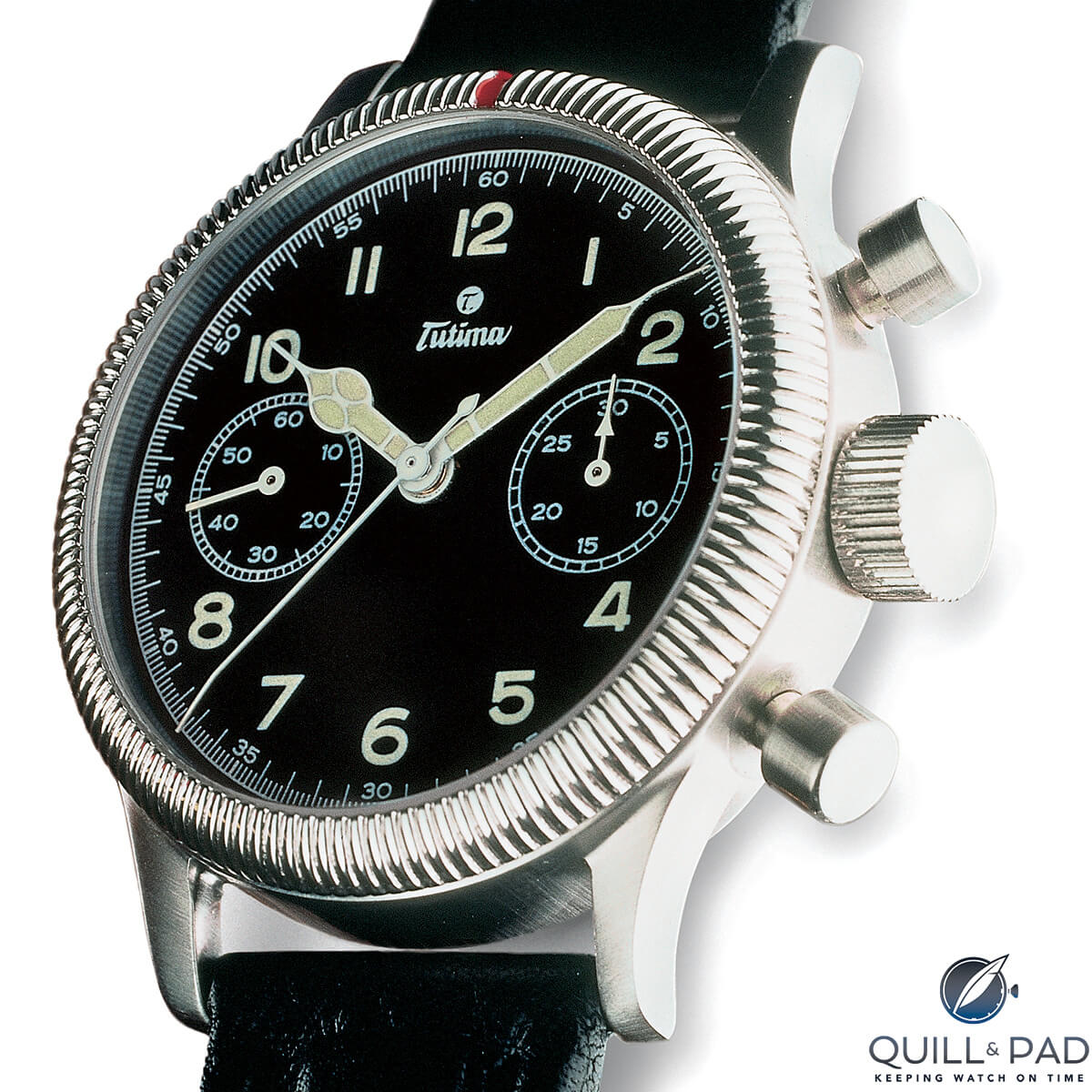
Tutima’s “1941 re-edition” in stainless steel, later known as the Tutima Grand Classic Flieger chronograph
Tool watches had a job to perform, and in those days the materials matched the job.
As time has marched on, the need for the specific jobs of these timepieces has often faded.
Dive watches are a case in point: a wristwatch is no longer an essential piece of diving equipment for sport divers or professionals working deep-saturation dives. At best, they serve as a secondary backup to the dive computer, bottom timer, or the topside diving supervisor in the case of professional divers.
Yet, dive watches are still hugely popular and used for everything from timing the barbeque to looking oh so cool in the hotel pool.
And, yes, for many divers (me included) as a backup – gasp – should the dive computer and/or bottom timer fail.
Collecting around a theme
Perhaps a collection features an aviation or maritime navigation as a theme. Watches made with this functionality in mind are durable, intended for a particular purpose, and used by uncompromising professionals with a job to do. For many collectors (guilty), it is even better if a previously owned piece shows the wear from its daily use in the field.
Today, many work-a-day tool watches have evolved into something truly beautiful. An example is the Ulysse Nardin Maxi Marine Diver in blue, encased in pink gold, which has the same 300-meter depth rating, extraordinary legibility, and resistance to shock as its steel companion.
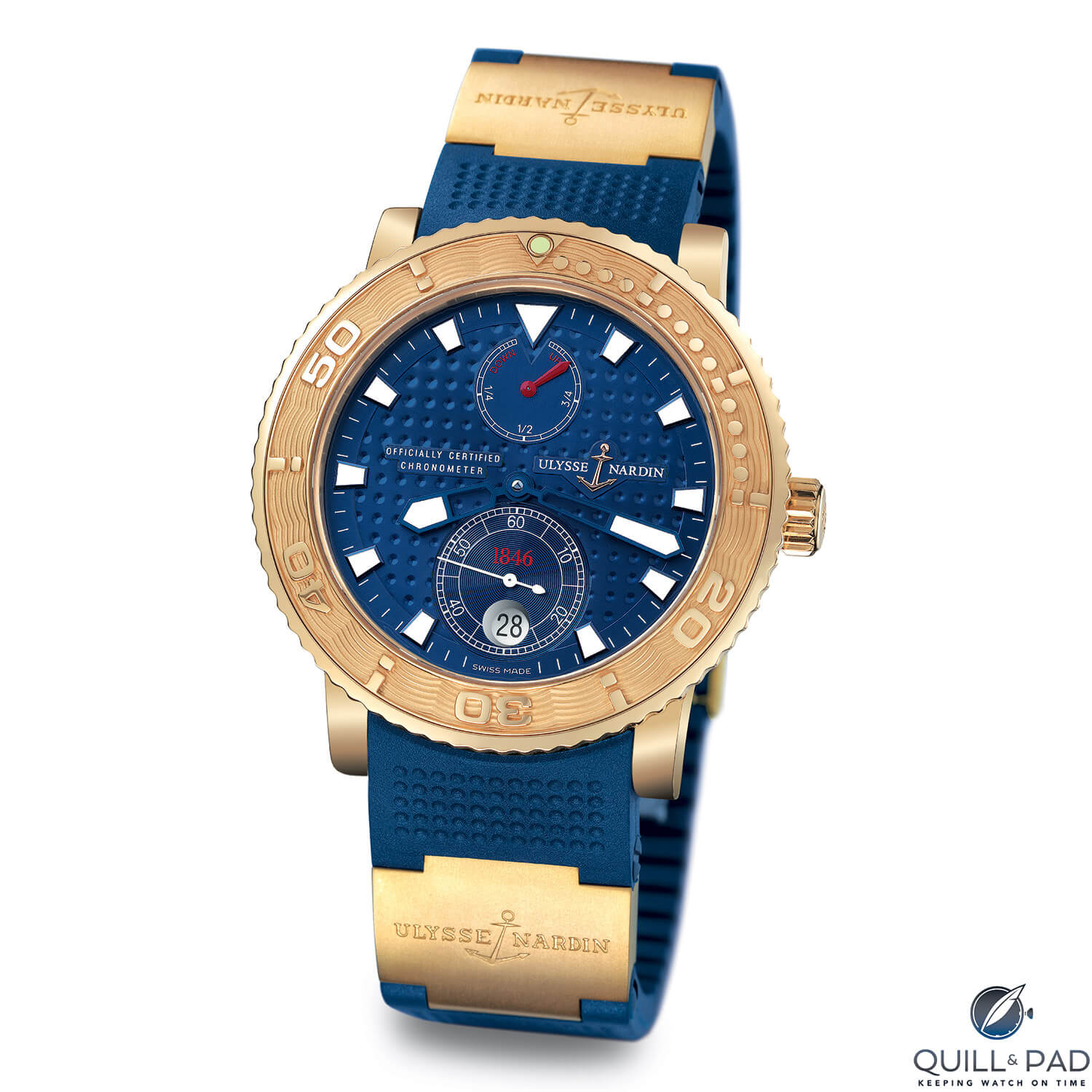
Ulysse Nardin Maxi Marine Diver in blue
Its one-way rotating bezel faithfully tracks elapsed time – of anything. However, this is a piece few would take on a dive. After all, gold is soft, scratches easily, and its shine is believed by some to attract unwanted predators.
I dived with it in the gin-clear, warm waters off exotic Phuket, and it performed as expected: perfectly and without any apparent difficulty.
What makes a tool watch a beautiful luxury piece? The answer, of course, is up to the individual.
However, during my discussion with Calzadilla of Tutima, we agreed that the most beautiful tool watch designs are those whose dial format, case material, and fit and finish precisely support its intended function without anything missing or unnecessary for its primary mission.
It simply gets the job done – perfectly, every time, without fail.
Military specs in a tool watch
Tutima is a brand with an extensive tool watch history that has evolved into a luxury collection. Yet Tutima’s “working” line remains rooted in the air and the sea, with the company producing military watches to NATO specifications since 1984.
To this day Tutima remains the official service watch of Germany’s military pilots. And in the States, Tutima provides a highly valued gift piece to pilots graduating from one of the top military air combat training programs.
Like many brands with a “working watch” history, Tutima has upgraded and improved this part of its collection over the decades.
Today, its M2 line replicates many of the same NATO specifications from the 1980s. However, the watch is now made of titanium rather than steel.
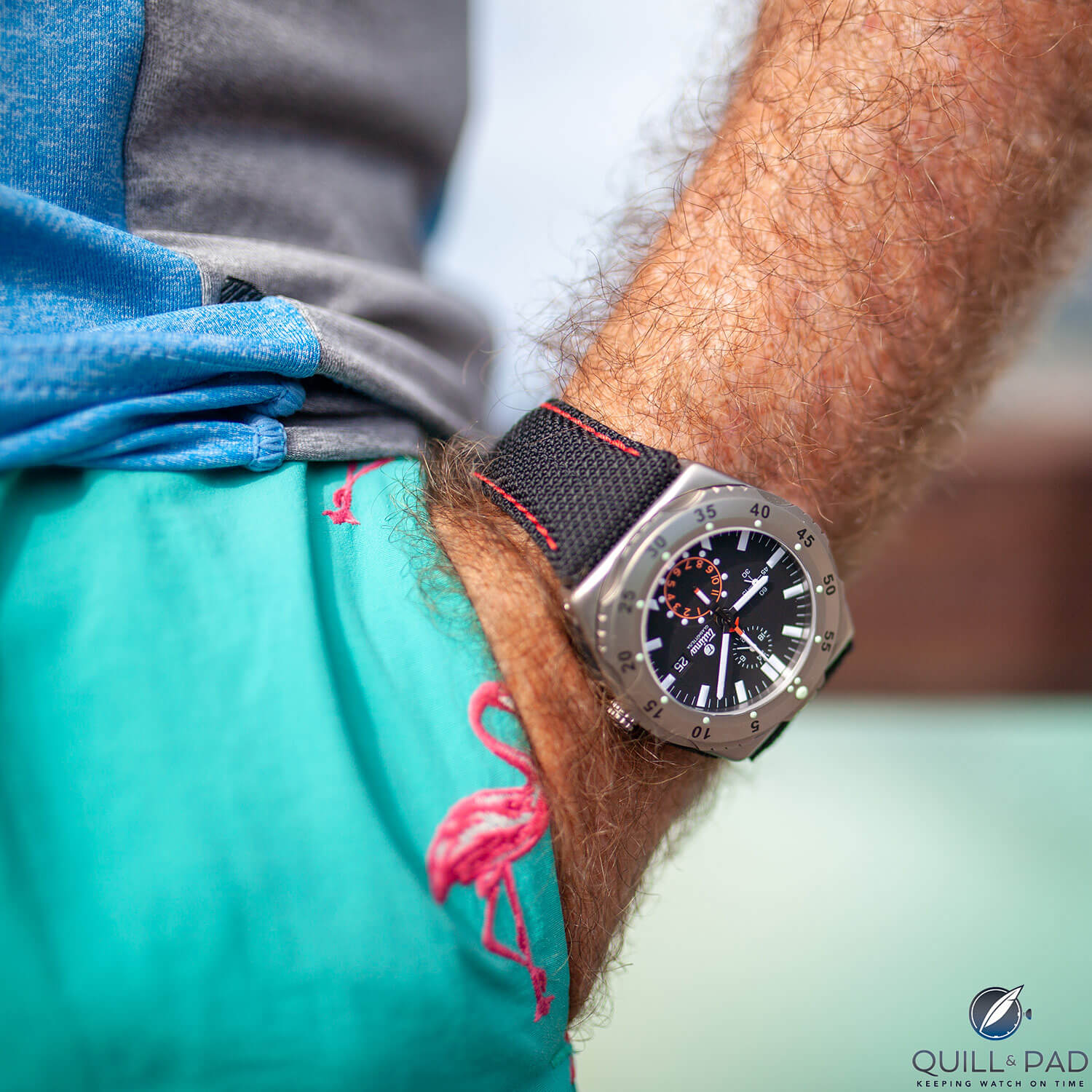
Tutima M2 (photo courtesy Sadry Ghacir)
“Titanium is hypoallergenic,” Calzadilla says. “It’s half the weight of stainless steel. It is antimagnetic, rust resistant, and not prone to changes from temperature variations.”
Then why the thick sapphire crystal? “It’s actually twice as thick as the original crystal. This – along with the screw-down crown and solid threaded case back – allows the M2 to achieve a 300-meter water resistance, making it impervious to shocks, vibrations, and acceleration up to 7 Gs in all directions.”
Serious hardware by anyone’s measure.
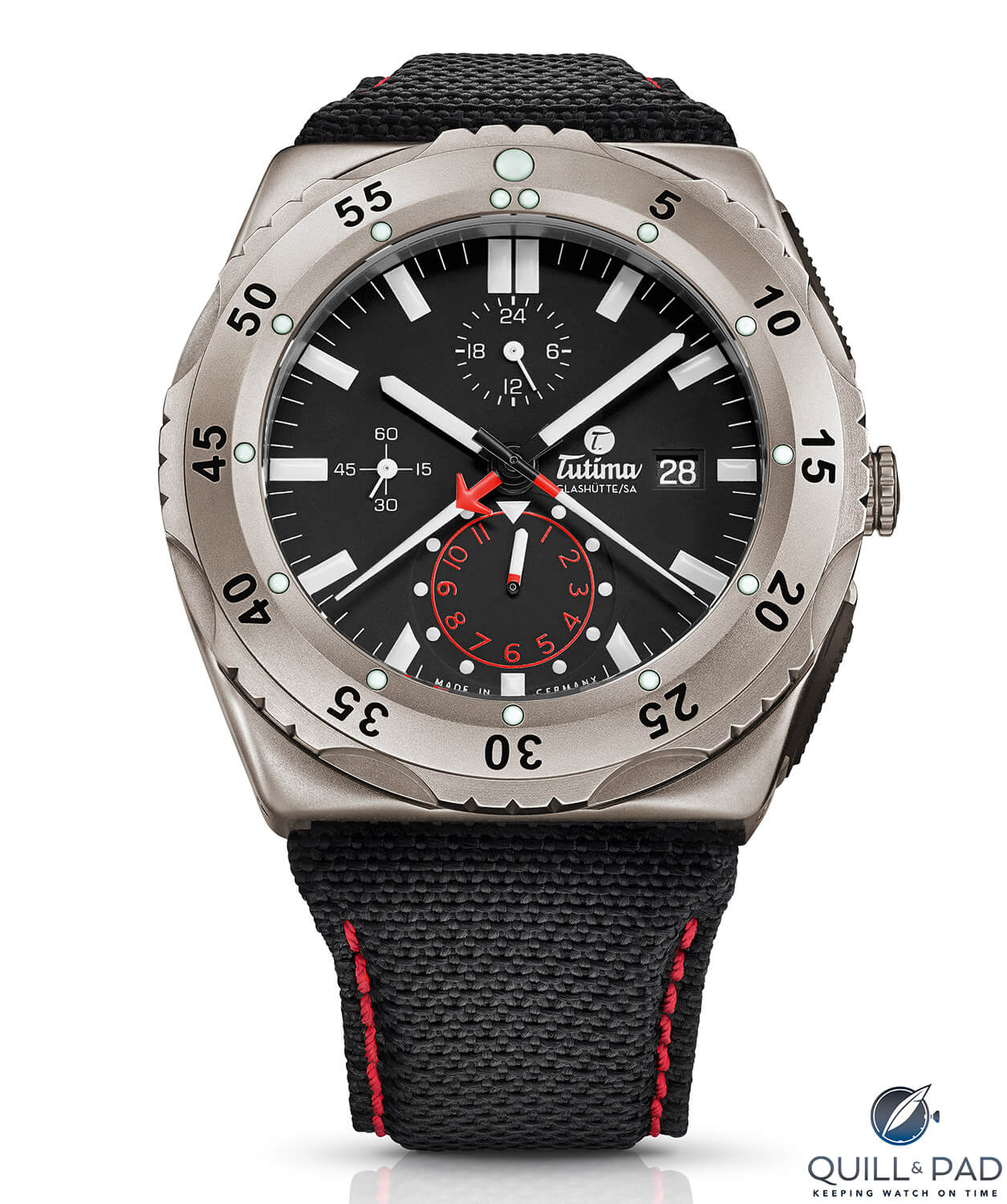
Tutima M2 Pioneer
The M2 Pioneer chronograph version has a bidirectional bezel but no minute markers stationed there. Instead, elapsed time graduates in five-minute intervals. Still, it could be used as a perfectly adequate backup dive watch even though it wasn’t designed as such.
Such engineering know-how and solid reputation has been a huge help as Tutima establishes its luxury lines, Patria and Tempostopp.
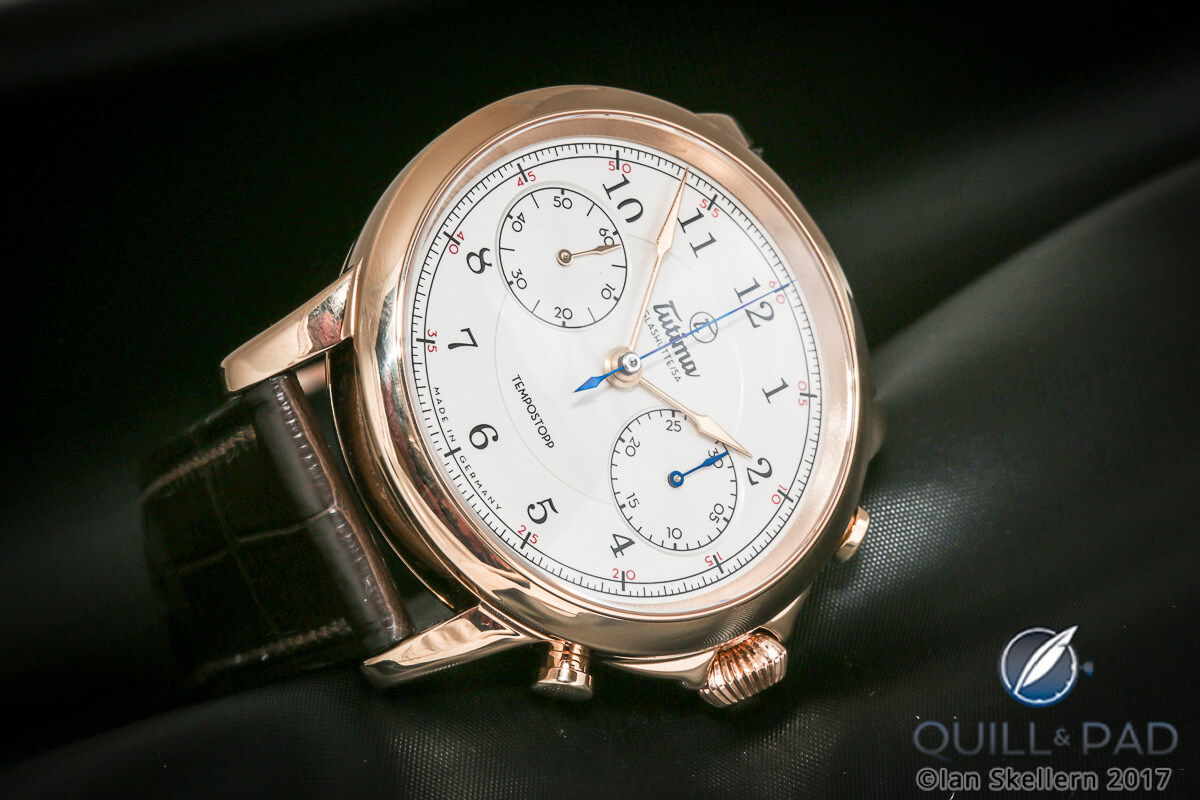
Tutima Tempostopp flyback chronograph
IWC also had its share of special orders from the military.
Germany’s military divers – specifically those stationed on mine sweepers – ordered special anti-magnetic titanium dive watches. IWC based these 200 pieces on its Ocean 2000 platform, then modified it according to the military’s specifications. IWC’s Knoop tells me that these pieces only rarely surface at auction, and when they do they’re extremely valuable.
Breitling is a brand that also remains solidly rooted in aviation. Yes, its collection has occasional forays into the sea (the Transocean, Transocean Heritage, and Superocean models being great – and popular – examples) and onto the carrier flight deck (with the Avenger collection).
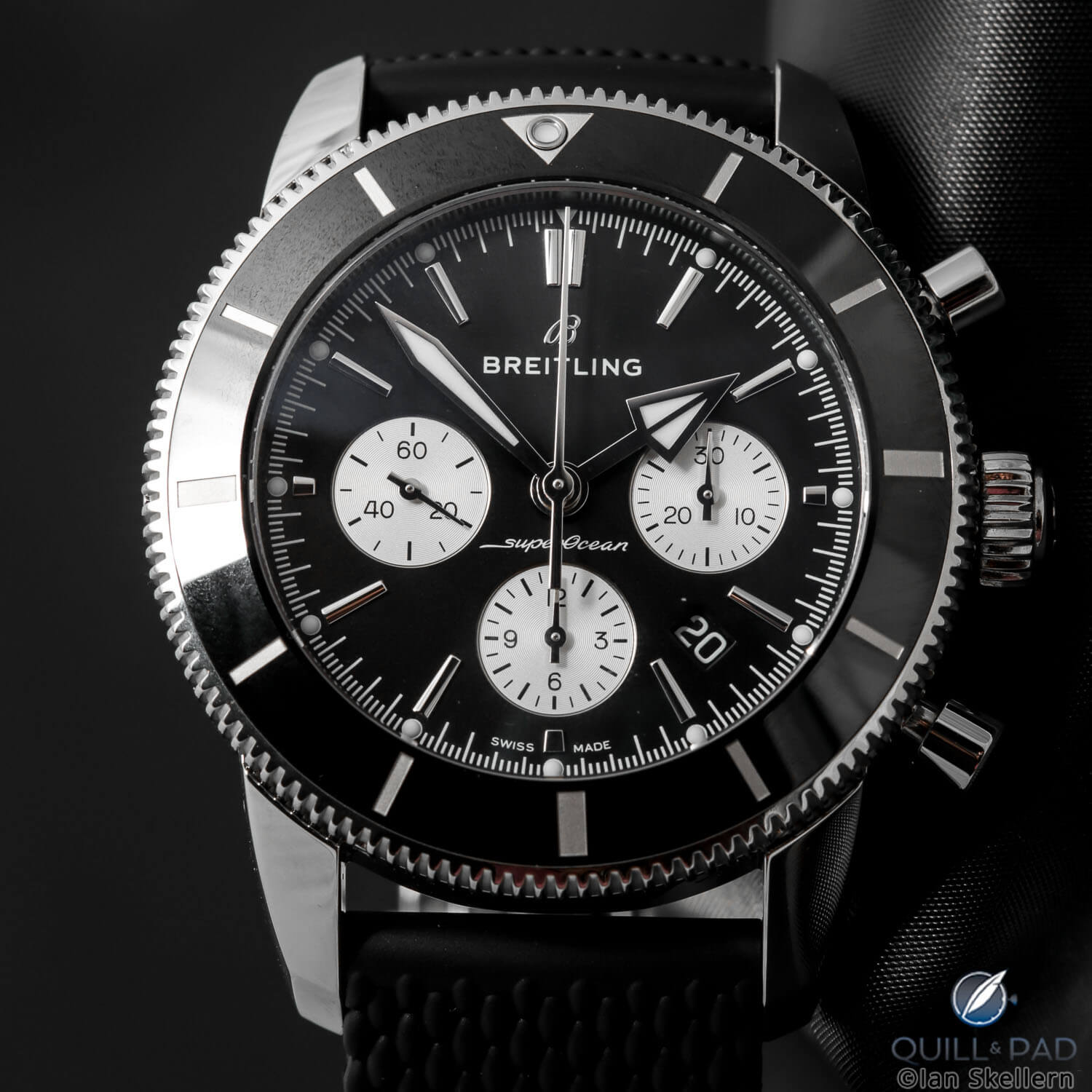
Breitling’s 2018 version of the Superocean
When most people think of Breitling, it’s still the aviation–oriented chronographs that first come to mind. And why not? It was Leon Breitling who invented the first chronograph with an independent pushpiece for pilots’ gloved hands in 1923.
Then in 1934 he separated the start/stop pushpiece from the reset pushpiece. Those two pushers made all the difference to pilots requiring precise timing.
In 1969 the evolution to the modern-day Breitling models arrived when the company released its first automatic chronograph, the bestselling Chronomat.
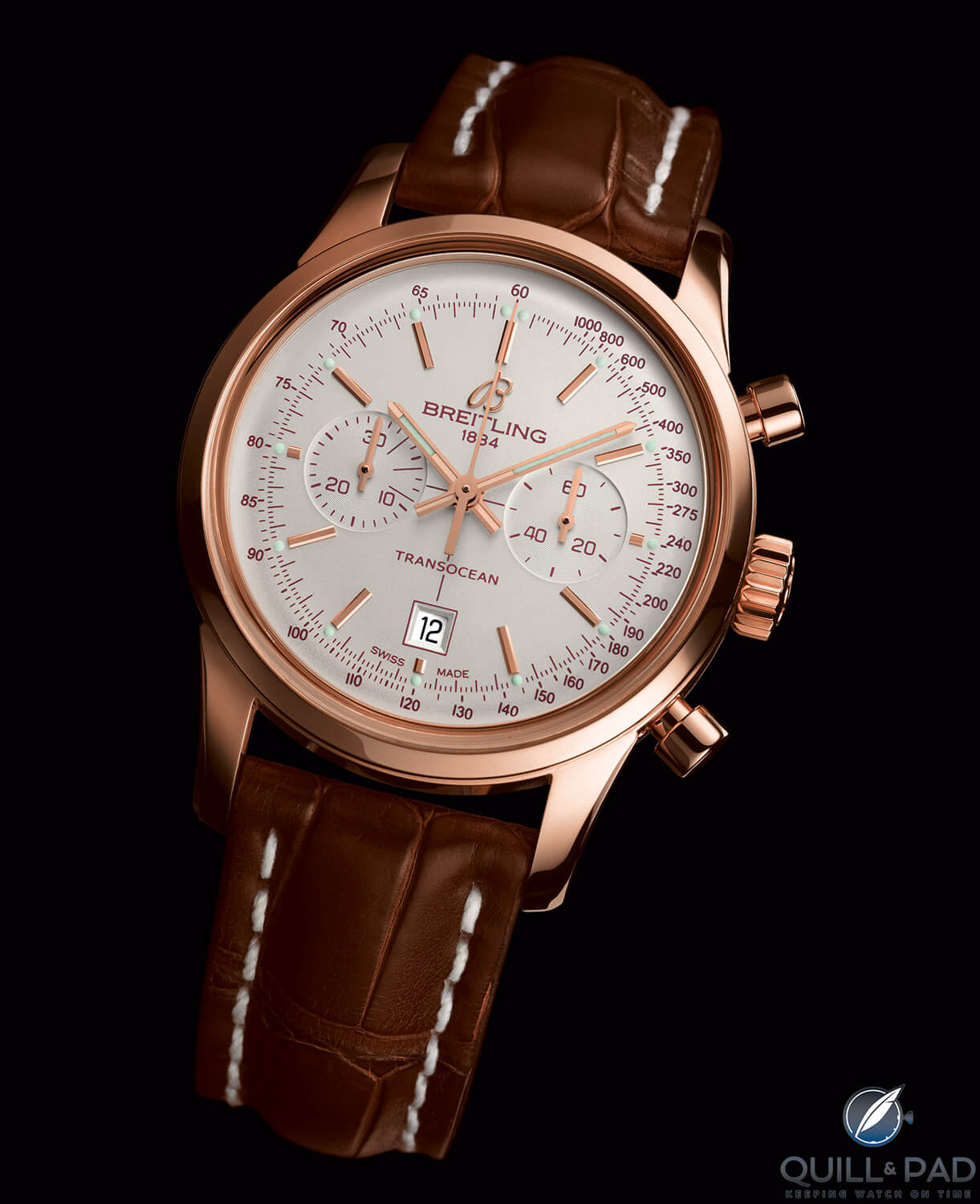
Breitling Transocean Chronograph in red gold
Even though Breitling is widely recognized as a producer of aviation tool watches, it has evolved parts of its collection into the luxury arena. The Transocean, for example, has been offered in an 18-karat red gold version on a strap since 2013. Some models are also offered with Milanese bracelets (see Milanaise Mesh Watch Bracelets: What’s The Attraction?). Very upscale for a tool watch.
What qualifies as a tool watch?
Diver’s watch
According to ISO standard 6425, there are 11 general specifications that define the requirements for a true diver’s watch. Here my top five.
- Measurement of elapsed time: this is most often measured by the bezel that rotates only counterclockwise in order to give the largest elapsed time if the bezel is knocked from its original setting.
- Visibility: the dial must be clearly readable in low-light conditions.
- Water-resistance rating: ISO specs the minimum depth rating for a diver’s watch at 100 meters. However, most true dive watches are rated for significantly greater depths. The fact is if you find yourself almost 1,000 feet underwater the least of your worries will be the time of day.
- Resistance to thermal shock: it’s usually cold underwater – especially at depth – while it’s often much warmer topside. You want a dive watch that’s impervious to such rapid changes in temperature.
- Durability of crowns and pushers: dive watches are constantly getting knocked around by equipment, railing, ladders, and rocks. You want a watch that can withstand such punishment without affecting operation.
Building these specifications into a precious-metal case and possibly rare dial material creates a luxury timepiece that is as rugged and functional as it is beautiful. That’s true of 50-piece IWC limited edition Aquatimer Perpetual Calendar Digital Date-Month: with a case diameter of 49 mm, this $56,300 watch makes a huge statement in and out of the water. Its 18-karat red-gold-and-titanium case can withstand depths of 10 bar.
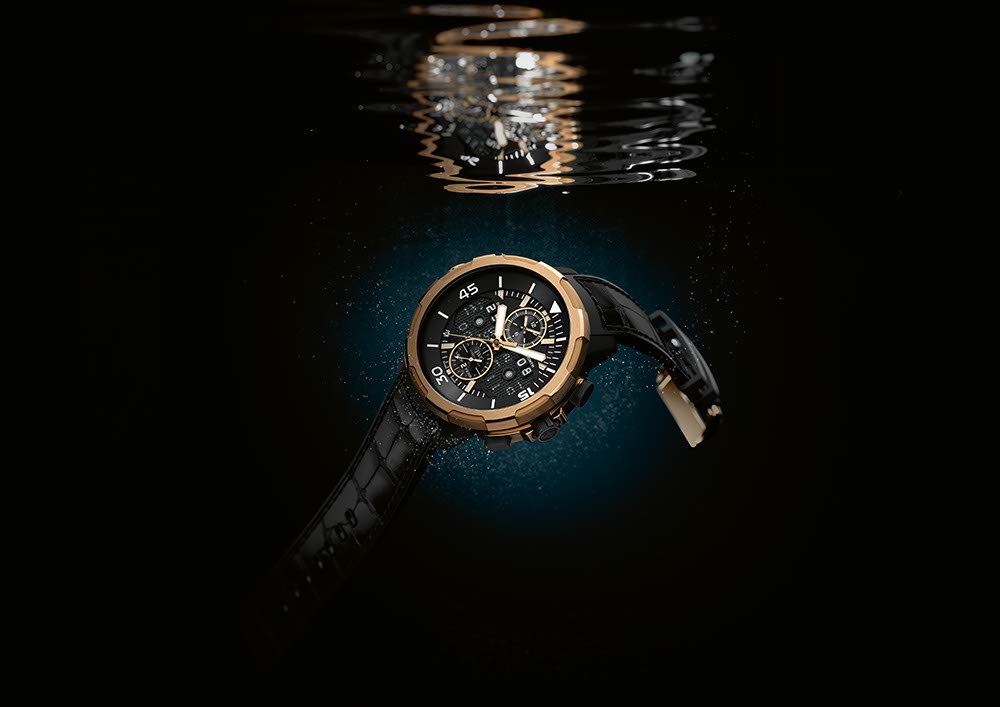
IWC Aquatimer Perpetual Calendar Digital Date-Month
Surprisingly, the iconic luxury brand Cartier has a true diver’s watches in its collection, and it’s one of the best. G.-A. Berner’s Illustrated Professional Dictionary of Horology defines a dive watch as, “ . . . a watch designed to withstand immersion to a depth of at least 100 m and to satisfy requirements specified in ISO standard 6425.”
The Calibre de Cartier Diver is an authentic diving instrument that does indeed meet ISO 6425 technical requirements for certification as a dive watch. Only those watches passing the exhaustive tests are allowed to call themselves “diver’s watches.”
Not even the storied Rolex Submariner meets the strict ISO 6425. Turn over a Sub and look for the designation, “Diver’s Watch.” You won’t find it. But you will on the Cartier. Powered by the automatic 1904 MC movement, the Calibre de Cartier Diver has a water resistance to 300 meters, rubber strap, precise unidirectional bezel, and time displays in Super-LumiNova.
And it has evolved into something truly luxurious as the Calibre de Cartier Diver Blue encased in pink gold.
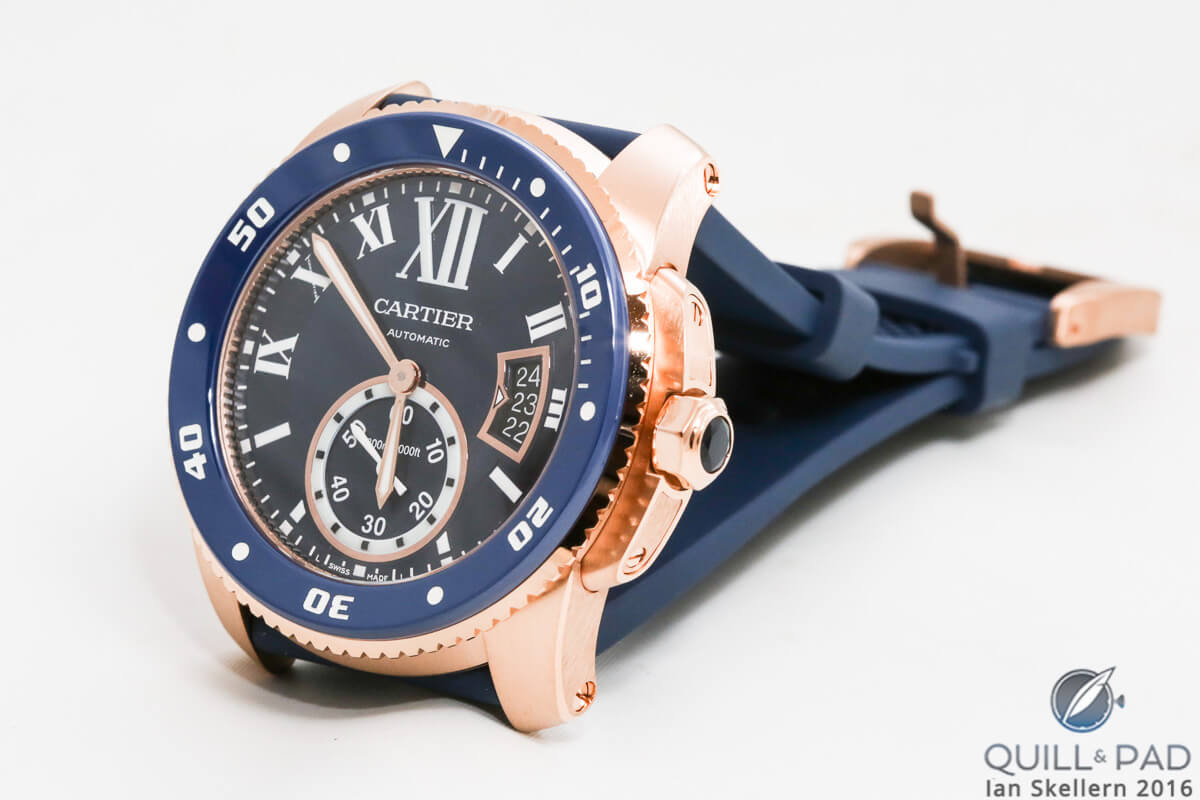
Calibre de Cartier Diver
Space flight
The mention of manned space flight automatically brings Omega and its Speedmaster collection to mind; NASA qualified this specialized tool watch in 1965 for all manned space missions.
Its timepiece requirements focused on operation in a vacuum, humidity, resistance to vibration, and that it be shockproof. The “Speedy” was the only timepiece to pass all of NASA’s stringent tests.
Astronaut Buzz Aldrin guaranteed the Speedy’s legacy when he wore his on the moon in 1969. One year later, on Apollo 13’s ill-fated 1970 mission, the Speedy came to the rescue when the capsule’s electrical systems failed. The astronauts used their Speedmasters to precisely time the retro-rocket burn that allowed for their safe return to earth.
Since then Omega has added many different models to its Speedmaster collection. Additionally, the Speedy’s classic, rugged tool watch demeanor has since been dressed up with precious case metals and beautiful dial materials in a variety of editions.
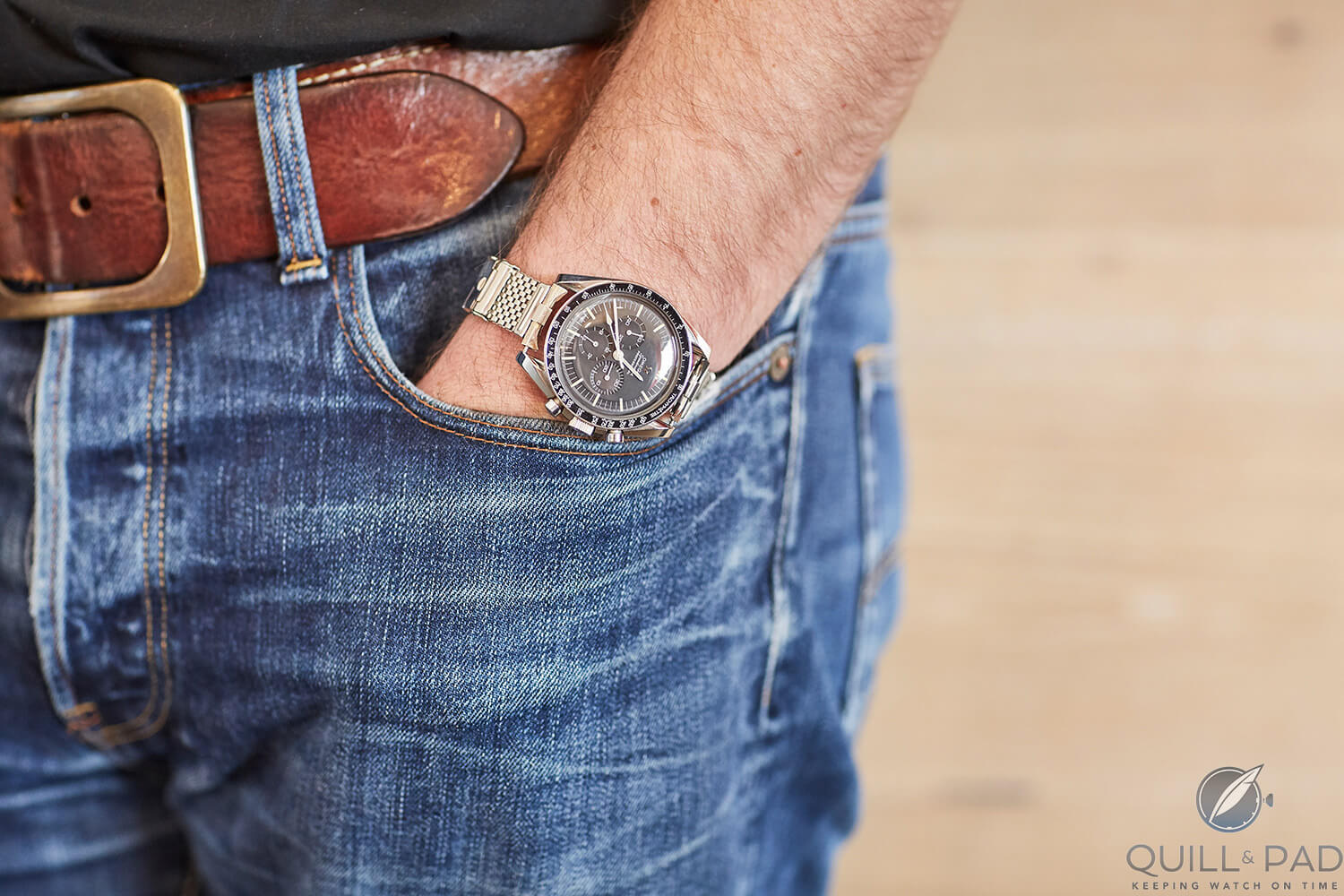
Omega Speedmaster Professional (photo courtesy Alex Stiebritz/AMX Studio)
NASA isn’t the only space agency flying watches. Since 2003 those worn by Chinese taikonauts have been made by Fiyta. These watches are all tested and approved by the China National Horological Quality Supervision and Testing Center.
The Russian Federal Space Agency has used Fortis automatic chronographs for its manned space missions since 1994. The Russian tests of the Fortis pieces seem to focus on acceleration (run up to 12 Gs, then down to 0 Gs) and operation in a vacuum.
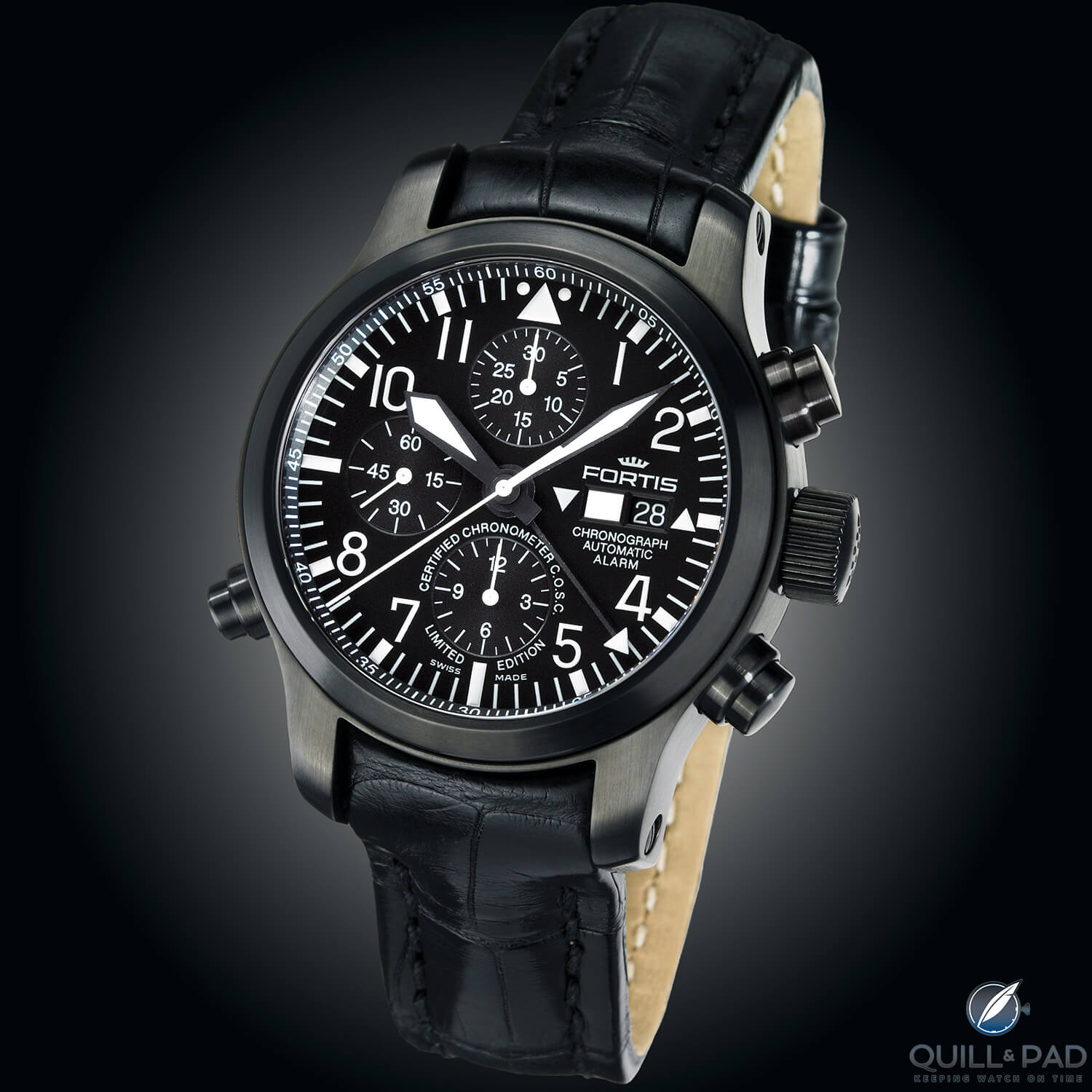
Fortis B-42 Cosmonaut Chronograph alarm
What makes a pilot’s watch?
Unlike diver’s watches, there are currently no ISO standards against which pilot’s watches are certified. The closest standard is TeStaF, a German abbreviation for Technischer Standard Fliegeruhren or Technical Standard for Pilot’s Watches.
This standard has been created jointly by Sinn Watches, EuroCopter, and the University of Applied Sciences in Aachen, Germany with the intent to build a new certification process for pilot’s watches related to functionality and stress tolerance. The TeStaF certification focuses on attributes such as accuracy, operability, function under temperature variances, underwater depth rating, and resistance to magnetic fields.
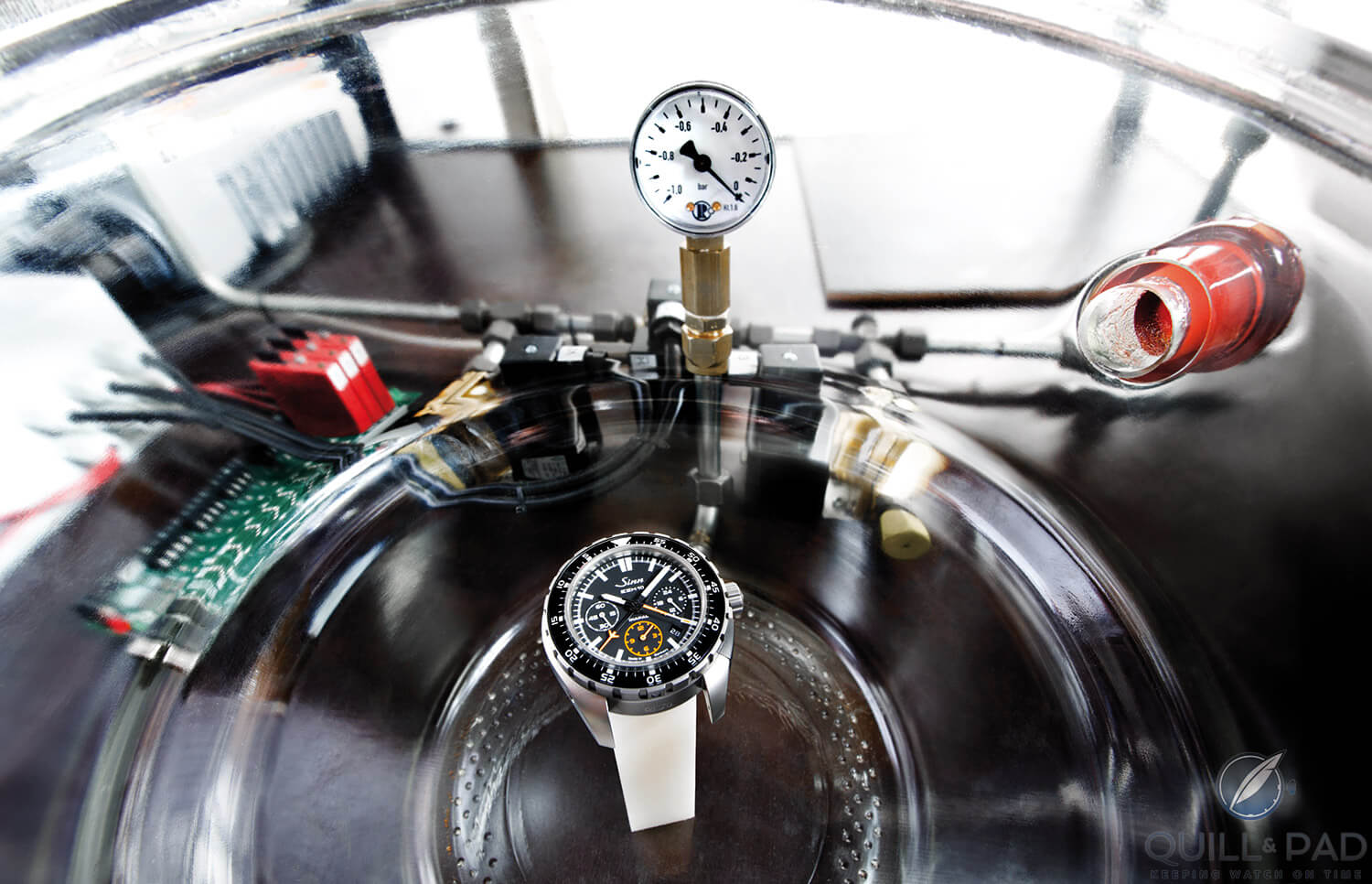
Pressure-testing a Sinn wristwatch to achieve TeStaF certification
Those watches successfully tested in compliance with TeStaF standards can bear the copyrighted quality mark “TeStaF” on the dial or case. This is similar to the way the “Diver’s Watch” designation is allowed for watches receiving the ISO 6425 certification.
Still, apart from Sinn and Stowa, other aviation watch brands have not yet chosen to pursue the TeStaF qualifying emblem. That could well have something to do with its close association with Sinn, a competing brand and founding partner of the endeavor.
Some manufacturers place their own requirements on their pilot’s watches. Tutima, for example, requires the M2 line to be easily operated using gloves, hence the eight-indent bezel.
And the brand’s pusher construction is nothing short of obsessive: Tutima’s patented hinged pusher system is integrated into the case, making the M2’s chronograph buttons highly resistant to breakage. Indeed, Tutima’s M2 employs oversized, rectangular-shaped pushers with neoprene inlays for traction when wet or using gloves. Activating the pushers produces both a tactile and audible confirmation the command was received.
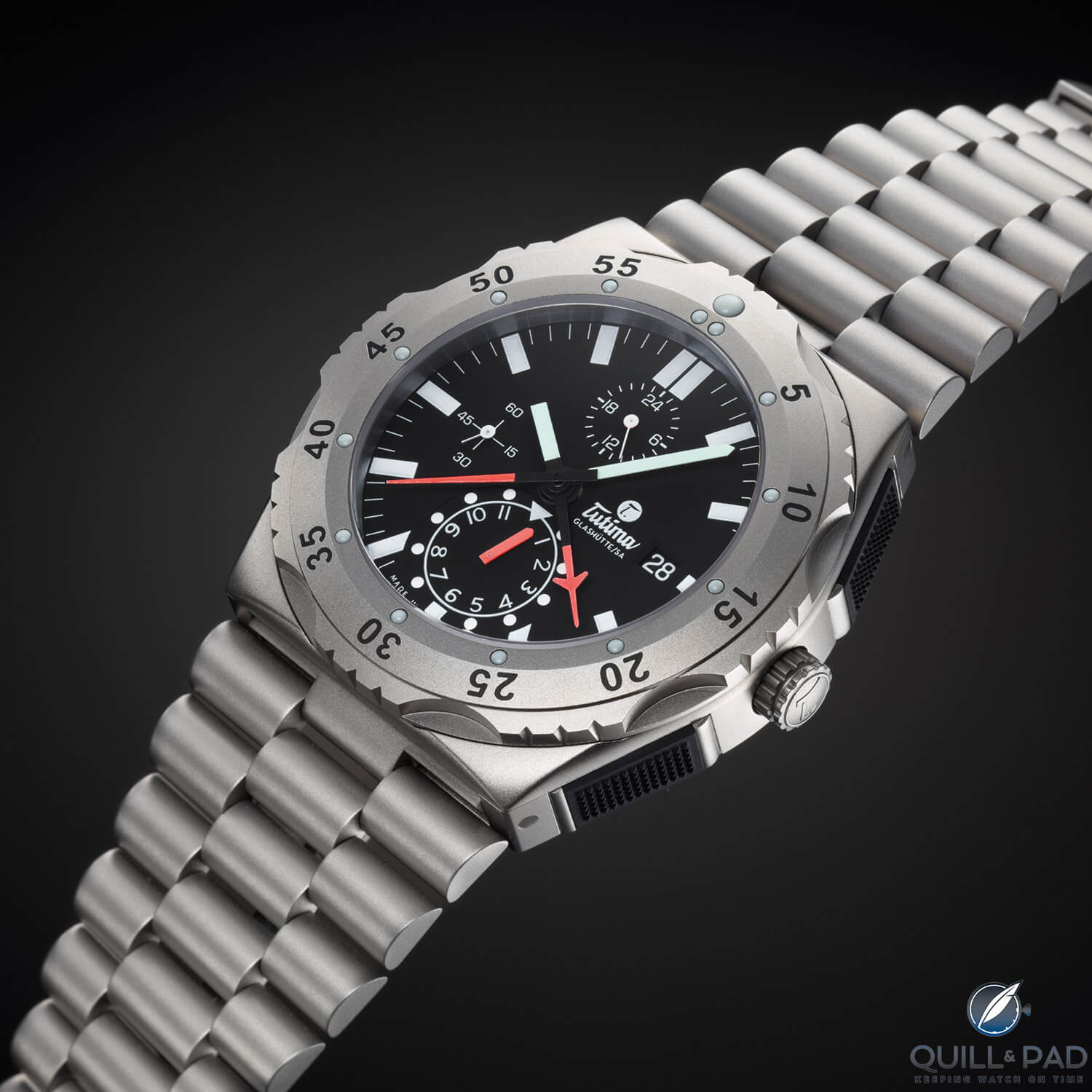
Note the integrated pushers on the Tutima M2, which are highly resistant to breakage
IWC is in the thick of pilot’s watches. “Our aviation heritage reaches back to the 1930s,” Knoop says. “IWC’s first aviator watches were large, easily readable, precise pocket watches. A decade later we introduced the wrist version of the Big Pilot. It was a robust piece, again easily read and with a pocket watch movement. It had a big crown that was easily operated with gloves.”
Why does IWC use an oversized crown and strap with rivets? “Back in the day these pieces did not belong to the pilots,” Knoop says. “They were issued before each flight as part of the pilot’s equipment load out. The pilots had to correctly set the time there in the cockpit, usually wearing gloves.” That little connection fills in the gap: the watch was always being taken on and off. Then after each flight the pilots turned the watch back in along with the rest of their equipment.
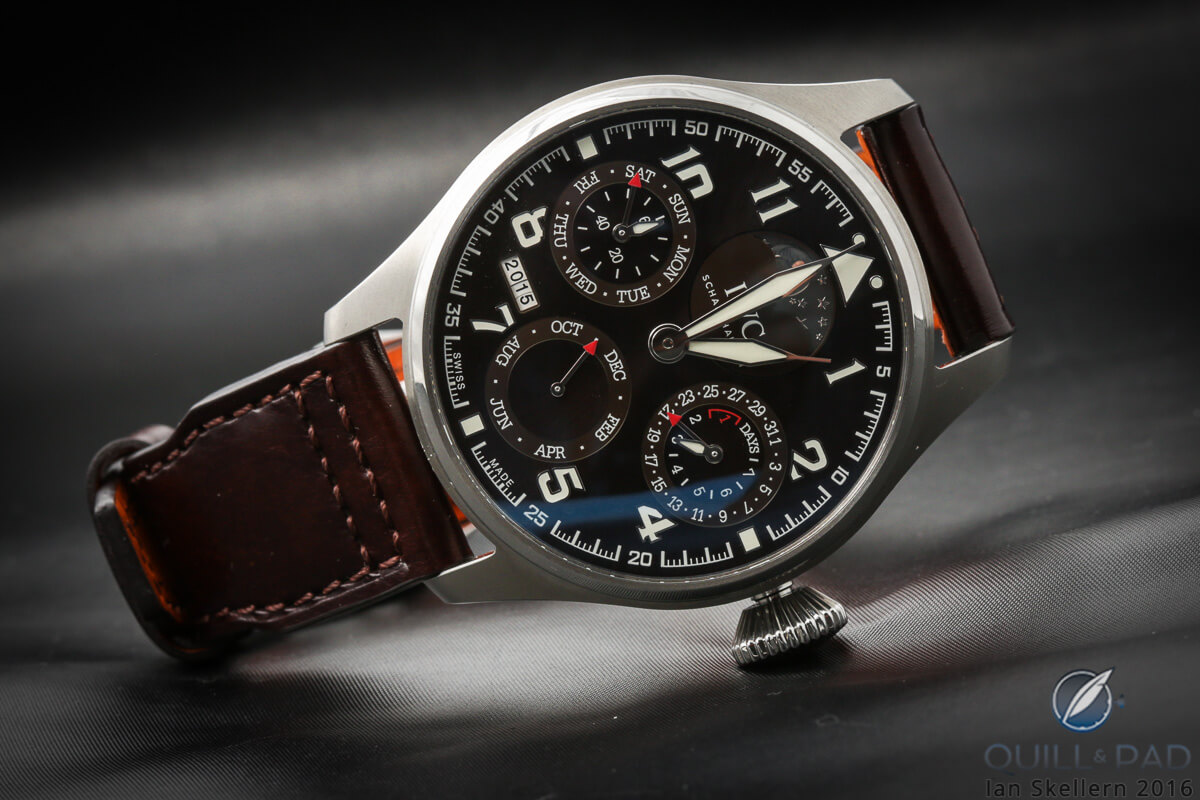
The 2016 IWC Big Pilot Heritage with perpetual calendar
IWC puts its sports watches (of which the Pilot’s line is a part) through exhaustive testing. These include impact tests, water resistance, readability of the lume, and effects of temperature extremes. IWC also simulates a 30-year lifespan of use in its pusher and bezel rotation tests.
Who uses luxury tool watches?
For many it’s nice having a beautiful timepiece that you don’t have to worry about. Go ahead, dunk it in the spa.
Having an MRI? Keep it on (well, on second thought, maybe not). Though Omega says its Seamaster can withstand the magnetic assault of an MRI machine.
According to Ulysse Nardin’s Sabatier, today’s tool watch wearers are usually male, 40 years of age or older, appreciative of classic design, and insistent on quality and durability. Knoop of IWC adds, “Tool watch owners often see themselves as adventurers and explorers. They’re interested in the field. Many have a related technical background.”
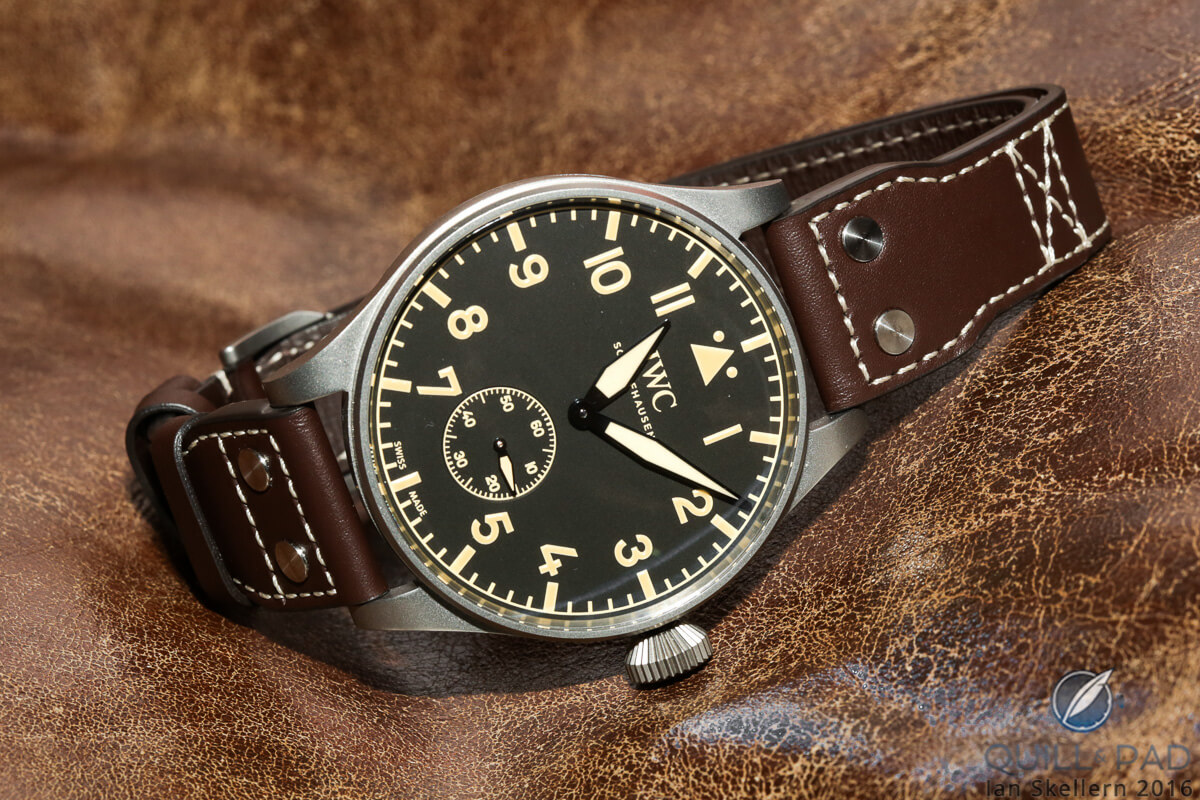
The IWC Big Pilot Heritage of 2016
Some tool watch owners want a piece they can wear to their hobbies and to the office. Tool watches reach back in time to the brand’s story and heritage while remaining rooted in the present-day requirements for a modern, utilitarian timepiece.
Sport divers often wear a luxe dive watch on dry land to show both sides of their personalities (rugged adventurer who can afford the best). Recreational pilots might wear an IWC Big Pilot or a classic Breitling Navitimer for the same reason.
The yachting set might also wear a tool watch, and Rolex has made one just for them: the Yacht-Master. Problem is, these are expensive pieces.
The boat crew probably won’t have them (or need them), but the boat owner just might. Still, he or she is rarely on the boat when it races – where the real work of sailing is done.
In this case Rolex got it exactly right: create a yachting-specific watch, dress it up in a blue ceramic bezel and gold case for the owner to wear to the yacht club while sitting in the bar, sipping a martini, and waiting for his race entry to dock.
It’s the perfect place for a highly engineered, luxurious tool watch that one day could actually be used for its intended purpose.
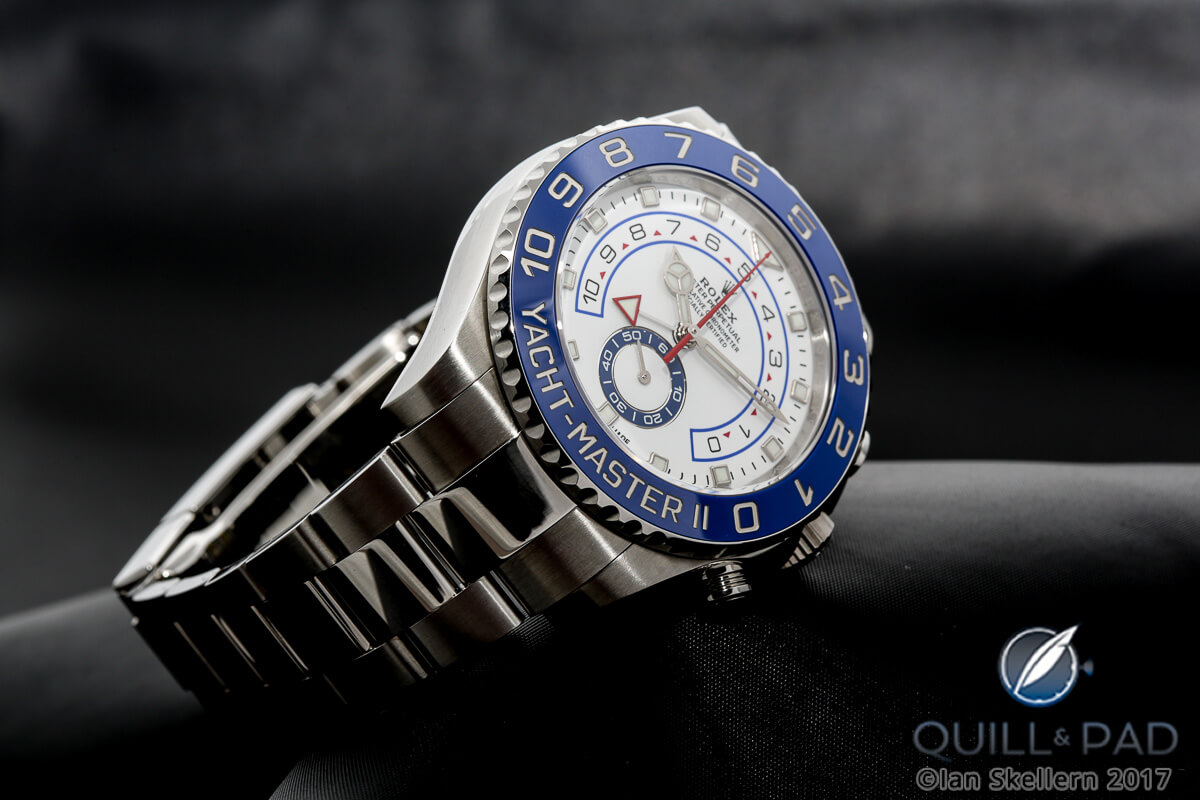
Rolex Yacht-Master II
The evolution of tool watches
Several luxury brands have taken the “DNA” from their tool watches and incorporated it into their luxury lines.
A good example is Ulysse Nardin; its Marine and Diver lines will remain a core offering going forward. These began life as utilitarian, mission-specific timepieces. They were offered in steel, were rugged in construction, and built to withstand whatever the sea could throw at them.
Sabatier says, “Since 1846 Ulysse Nardin’s quality and accuracy have been the highest on the market. The expertise of Ulysse Nardin’s watchmakers was famous. Back then each piece was hand made and unique. Ulysse Nardin was best in class.”
Shifting to modern times, “Simplicity inside the company is front and center,” Sabatier says. “We make small improvements that distinguish our pieces and add to their wearability. An example is the metal devices found on some of our rubber straps. Of course they add to the aesthetics. But from a functionality standpoint, they place an amount of flex exactly where it is needed most so the watch and strap hugs the wrist. Such small improvements add distinction and ergonomics to the evolution of our watches.”
Ulysse Nardin is bridging its past with today’s offerings. According to Sabatier about 80 percent of the company’s production uses in-house made movements, allowing the brand to retain complete quality control.
The second mandate within the company is simplicity. “As the collection evolves we make changes, add new components to simplify the piece, not to make it more complicated.” From our discussion I got that Ulysse Nardin’s watches become more accurate, more sophisticated over time precisely because of the evolution of their simplicity.
The Freak is another example: it has continued evolving since its 2001 launch as a watch that is actually more sophisticated now but simpler to use (see Ulysse Nardin Freak Vision: Promises Realized).
Ulysse Nardin has added some very sophisticated pieces to the luxury side of its tool line. One in particular – the Marine Grand Deck Tourbillon – encased in platinum with a price of $310,000 is anything but a tool watch.
This timepiece limited to just 18 examples features halyard-like rigging, normally used to winch a ship’s sails up and down. In this application the Lilliputian winches mechanically move the minute hand. Note the hand crafted wood marquetry dial evocative of the deck planking on sailing vessels.
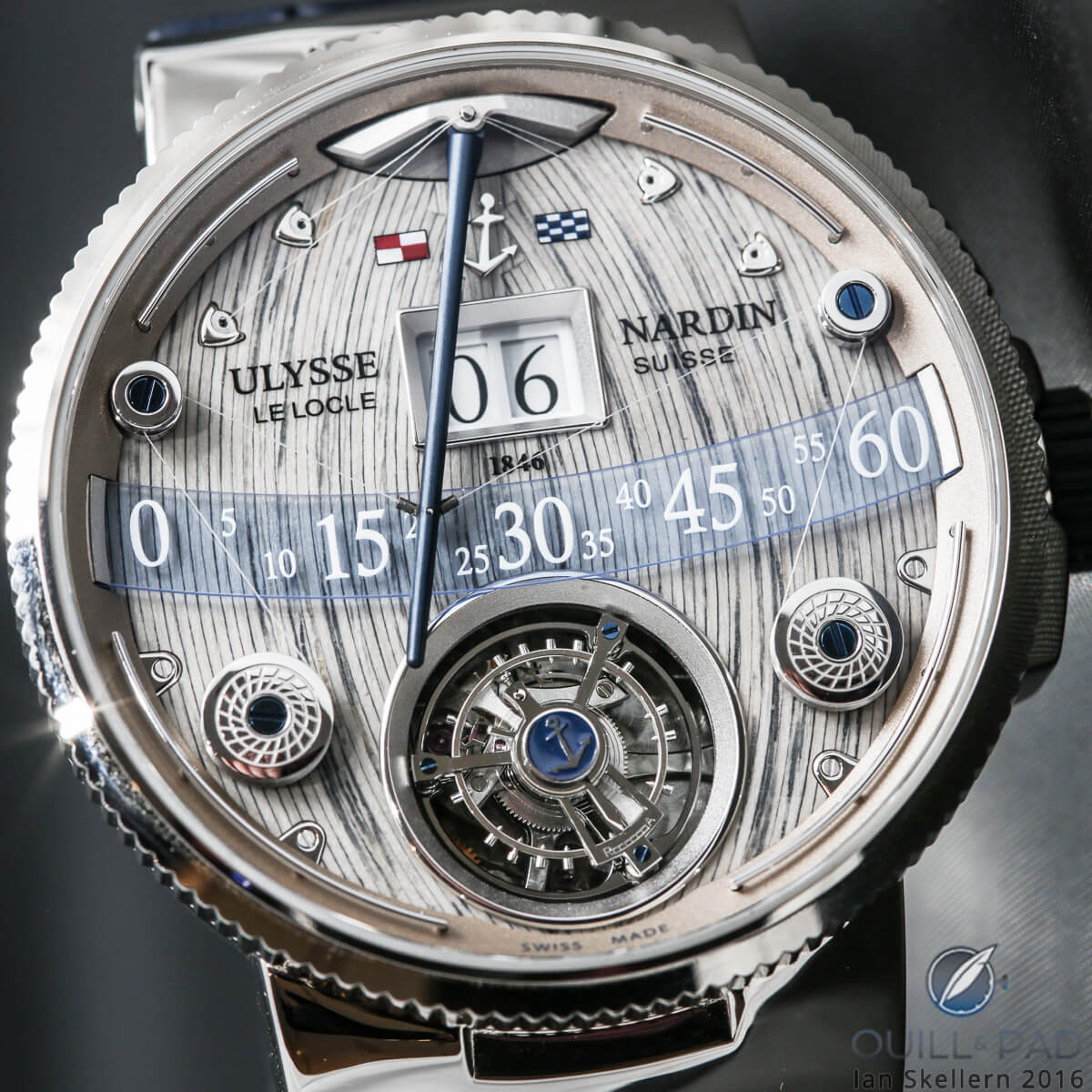
Ulysse Nardin Marine Deck Tourbillon
No, this is not a tool watch. Nor are its owners likely to view it as an everyday wearer. By the way, being Ulysse Nardin, even this watch is rated water resistant to 100 meters. That it incorporates Ulysse Nardin’s marine DNA and the brand’s maritime history into a single piece is indisputable.
The Grand Deck Marine illustrates how brands evolve from tool watches into luxurious, highly collectable, rare pieces. With its pulleys and winches, certainly this piece along with the Freak collection qualifies as haute horlogerie. “Yes,” says Sabatier, “we do produce works of art. Haute horlogerieis not in opposition to Ulysse Nardin’s values of quality, durability, and accuracy. We can have both.”
Knoop contends that haute horlogerie is not what people usually think of related to IWC’s heritage. “We are an American engineer brand combined with Swiss craftsmanship. IWC uses a technical, no-frills approach to design. Haute horlogerie, on the other hand, is more artistic. Instead we look for that perfect balance between form and function.”
Yet to many IWC collectors that balance is art. Having observed the industry’s designs for a while now, I’d say that IWC stands out as an easily recognizable brand precisely because of this utilitarian balance between form and function. It’s a look that speaks to a large segment of the watch-buying and -collecting public.
Final analysis
Tool watches began as equipment used on the job. Their beauty was in their capability, reliability, and efficiency.
But they’ve evolved.
Today many of the luxury watch brands that began their careers making tool watches have repurposed these same pieces for their luxury-minded customers. Yes, many still carry some of the same specifications of the tool watches that made them famous.
Tutima is one with its mil-spec precision and reliability. IWC is another. Ulysse Nardin also began on the sea with its eponymous founder’s marine chronometers and has never left it.
What is the purpose of an upgraded luxury tool watch? That depends on the owner.
To me, every watch in a collection is meant to be used – though in most cases, used gently if it’s a luxury item. If it’s a dive watch, then we dive with it. If it’s a pilot’s watch, then it flies with us. If it’s a chronograph, then it measures time – even if only for the ribs and brisket in the smoker.
Each piece has a story and a history behind it; new timepieces carry their manufacturer’s history and heritage. Ulysse Nardin’s Sabatier says, “It is important to retain our past, but to also face the future.”
Some owners of a luxury tool watch want it to remind them of what they once did for a living. For others, it represents an aspirational reminder of what they’d like to do.
Finally, let me say that owning a pink gold diver’s watch costing more than many of our parents’ first homes is like having a Porsche Cayenne ($90,000 and up) in the garage: you probably won’t ever test its capabilities to the limits for which it was designed. But you could.
It’s that same untapped capability just waiting to serve that a tool watch imparts. Even though it might have a gold case, that watch can still accompany you anywhere and survive anything the circumstances dish out.
At the end of the day, having such excess capacity at the ready is the allure that continues the evolution of tool watches.
*This story was originally posted on April 6, 2018 at The Tool Watch Revolution: Utilitarian Goes Upmarket.
Chris Malburg is the author of four novels, including Man of Honor.
You may also enjoy:
Hammer Time: Expert Advice For Selling Your Watch At Auction
Shopping The Airports For A Luxury Watch: Customs, Duties, And Discounts Explained
Timekeeping In A 5G World: Coordinated Universal Time Blown Away By Ultra-Precision Time On Tap
Leave a Reply
Want to join the discussion?Feel free to contribute!



EVERY watch qualifies as a tool watch…a watch is a tool.
Dress or sport is a better way to categorize watches.
They all serve one or many functions, therefore they are all tools.